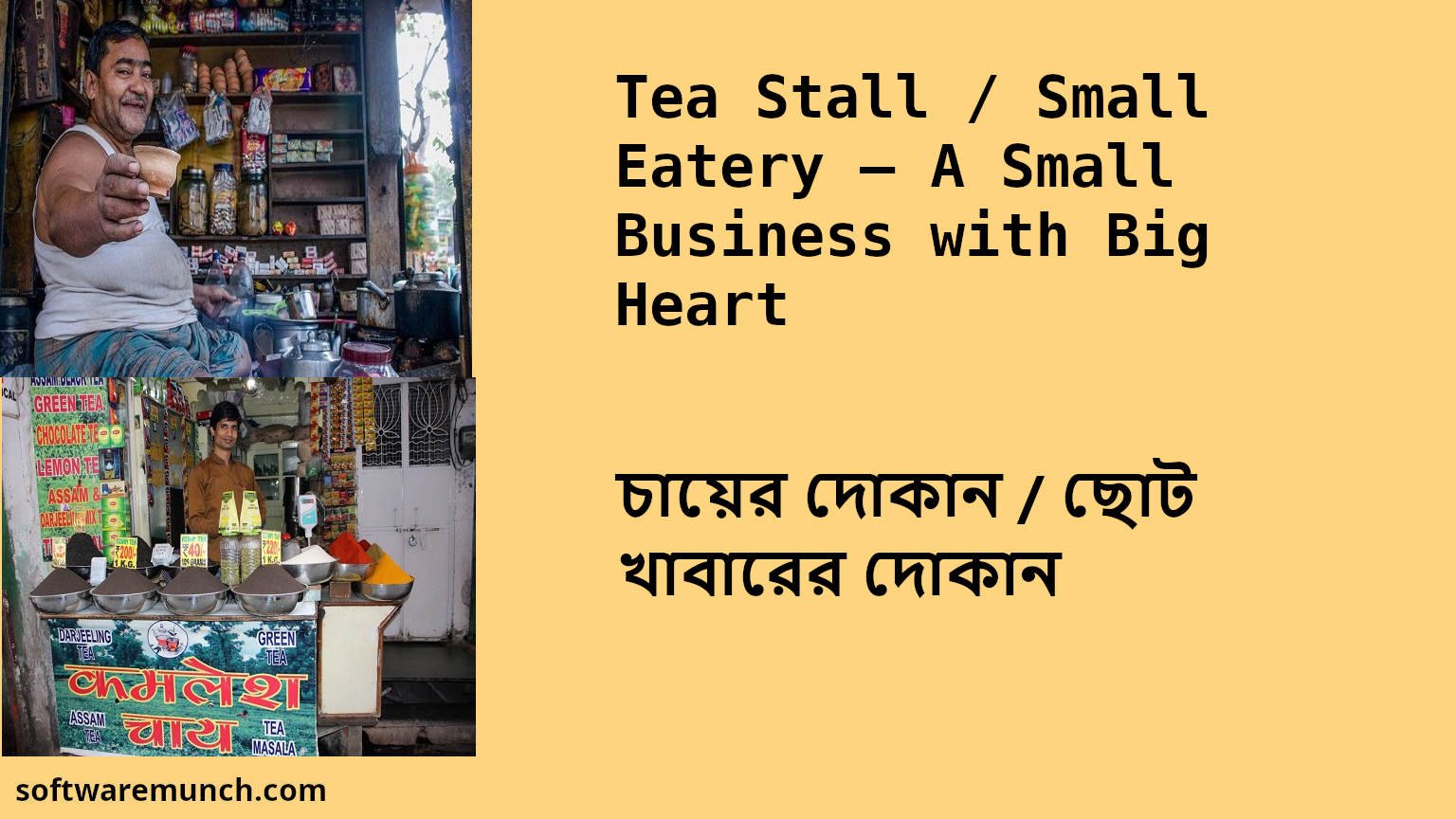In every small town and village in india, there exists one place where people gather in the morning and evening thats is the tea stall. A hot cup of tea with a biscuit or a samosa is not just food, it is also friendship, laughter and local news and guess what? gossip. A tea stall or a small eatery can be started with less money and it can give a steady income if done properly.
Starting a Tea stall – the Idea
Many young people in villages think they need big money to start a business. But a tea stall does not need much. A small place near the market, bus stand or school can be enough. People always look for a place to sit and drink tea, eat something light snacks and talk.
Let us take the example of Rahim mia from Karimganj. He worked as a helper in a small restaurant in Silchar. Later when he came back to his village near patharkandi and opened a small tea stall near the bazaar. At first he sold only tea and biscuits. Slowly he added samosas, pakoras and parathas. Today his stall is full every evening and morning.
Investment Needed
To start a tea stall or small eatery, you need some money for these things:
- Stove or gas burner and gas cylinder
- Kettle and cooking utensils
- Tables and benches ( simple wooden or bamboo ones are enough in beginning )
- Tea leaves, sugar, milk, snacks and plates
If you start very small, you may need only Rs20000 to Rs30000. If you want a bigger eatery with more food items, it may take Rs50000 to Rs 1 lakh.
Government Loan and Help
Small businesses like tea stalls can get loans under PMEGP (Prime Minister employment Generation Programme) or Mudra Loan Scheme. Banks also give small loans if you show a clear plan.
But many people start without loan. They take some money from family or friends or use family savings. A tea stall can earn daily, so the money comes back quickly.
Choosing the Right place
The place is very important. Some good locations are:
- Near school or college – students always want tea and snacks.
- Near bus stand or railway station – passengers stop for tea.
- Near the market – after shopping, people like to sit and eat.
- On main road of village – people walking or cycling can stop.
If the place is very crowded, your shop will always have customers.
Procuring Items
- Tea leaves and sugar – buy from wholesale market in nearby town.
- Milk – buy it from local dairy or farmers. Fresh milk makes better tea.
- Snacks – you can make simple ones yourself (pakora, samosa, paratha) or buy from a nearby sweet shop at wholesale rate.
- plates and cups – steel glasses and plates are best. Some also use paper cups and plates to save washing time.
Learning the Skills
Making good tea is an art. People like strong tea with proper color and taste. Some customers like less sugar, some like more milk. After a few days, you will know what people in your area like.
Cooking small snacks is not very hard. You can learn from Youtube videos or by helping in someone’s kitchen for a few weeks. If you want to serve proper meals (dal, sabzi, rice), you can hire a local cook.
Running the Stall : Daily Work
- start early in the morning with fresh tea.
- Keep the stall clean. Wash cups and plates regularly.
- Talk politely with customers. Many people come again and again if you behave well.
- Keep small change money ( coins and small notes ) also keep UPI for payment.
- In evening, offer fresh snacks. Evening is the busiest time for most tea stalls.
Struggles and Problems
Running a tea stall is not always easy. Some common struggles are:
- Competition – In market, many stalls may be there. You need to make tea better than others.
- Weather – Rainy season can spoil business if there is no proper roofing.
- Health check – Sometimes food inspectors ask for cleanliness. Always keep your place neat.
- Credit – Some customers drink tea and say “I will pay tomorrow.” Too much credit can be dangerous.
But slowly, with patience you will learn how to handle these.
Extra Income ideas
Once your stall is running well, you can add more things:
- Biscuits, chips and also cold drinks
- Mobile recharge, SIM cards
- Small shop of cigarettes, supari and matchbox
- Evening meals like chowmein, egg roll or momo ( momos are always a big hit every where in india)
These extra things can give more income without much cost.
License and Permission
In most small villages, tea stalls run without license. But in towns, you may need permission from local municipality or panchayat. Sometimes, food safety registration (FSSAI) is required for eateries. It is better to keep documents ready if you want to expand business later.
Future Growth
A small tea stall can become a big eatery in future. Many famous restaurants started like this. If you earn daily, save some money and invest in making the place better – good chairs, a bigger roo, and more food items.
Last Words
A tea stall or small eatery is more than just a business. It is a place where the heart of the village beats. With small investment, very simple skills and hard work, anyone can start this. Like Rahim from Karimganj, many youths can return to their village, start their own tea stall and live with respect.
